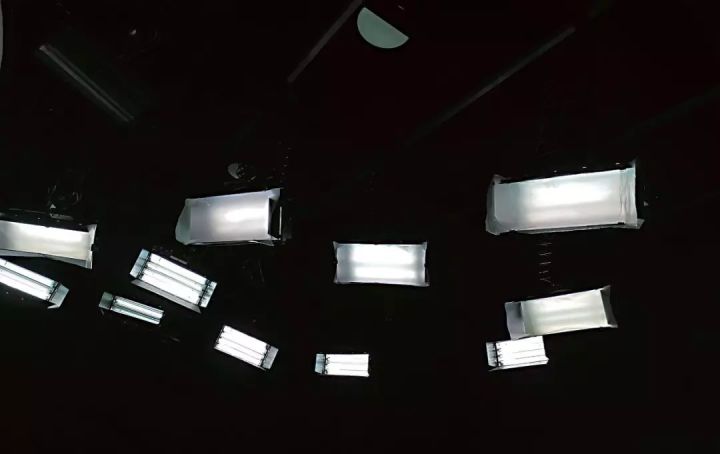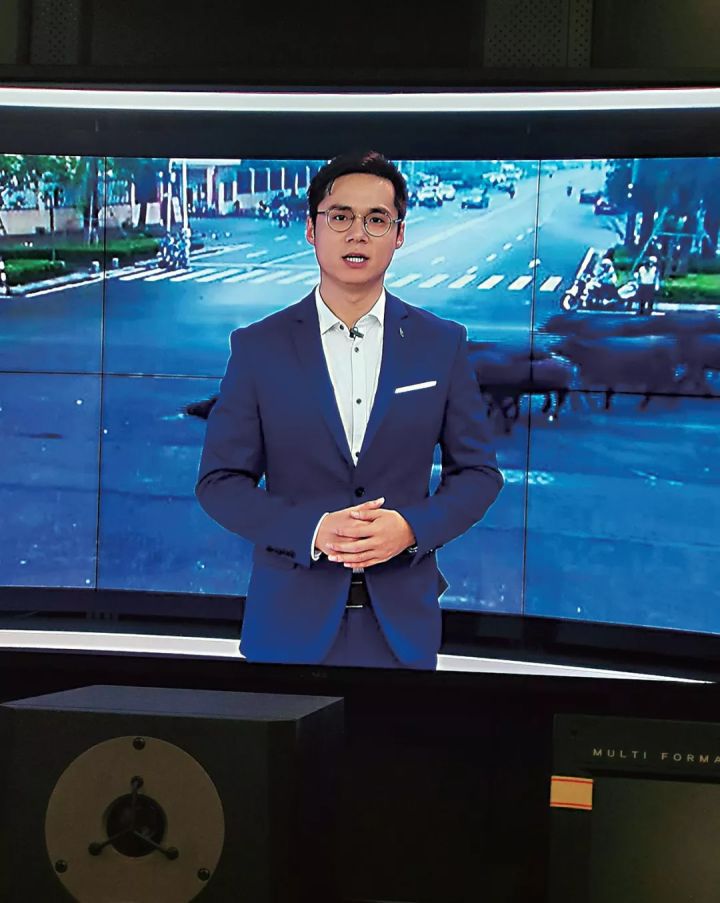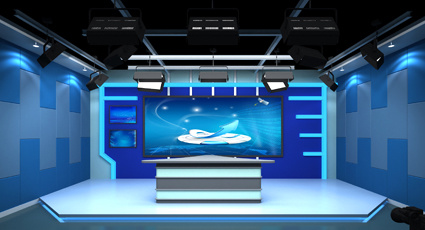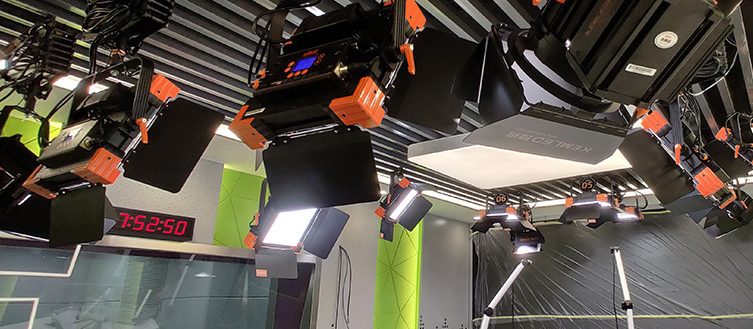Lighting plays a role in creating atmosphere and setting off the environment in the specific environment of TV programs, and it often has a decisive impact on the entire scene design image of the studio. The lighting of the studio is roughly divided into main light, auxiliary light, backlight, head light, side backlight and so on.
1. Main light
The main light is the main light source and is the most important light source in the studio. The light emitted by the host at different positions will be very different. Therefore, the lighting must be dimmed when the host is present, because a small adjustment will have an impact on the whole. We call the key light the most important light because it is stronger than any light that hits the host, so it creates shadows and therefore requires a lot of other lights.
2. Auxiliary light
The fill light is usually placed directly in front of the subject or on the opposite side of the key light. The fill light’s job is to establish the desired lighting ratio and control the shadows created by the key light. Its intensity can’t be too strong, if it is too strong, shadows will appear, then it will become the second key light, thus destroying the picture.

3. Backlight
The backlight plays a very important role in shaping the host. The backlight separates the host from the background, and can also widen the distance between the host and the background to enhance the visual sense. When the backlight is used at the same time as the key and fill lights, this relationship is called “three-point lighting”.
4. Hair shines
UNCUCO believes that hair light is also a kind of backlight, which can be used in combination with backlight. In order to increase the overall three-dimensional sense of the host, a highlight is placed on the head to make the facial features more three-dimensional, and the host’s hair and shoulders can look contoured. stronger.
5. Side backlight
The side backlight is also a backlight that covers a limited area, but instead of the backlight at the back, it is on the side of the presenter. At any position above or below the host, it is used for fill light, which can make the side cheeks more three-dimensional and more layered.

Lighting is not independent, and it can only be displayed more wonderfully on the screen by combining with the aperture of the camera. In order for the camera to better capture a clear and realistic TV picture effect, different cameras have different requirements for light due to different sensitivities. With the continuous improvement of illuminance and camera sensitivity, the lighting requirements of TV studios are also increasing.
As for the best illumination value, the benevolent see benevolence, and the wise see wisdom. Of course, it also depends on the host’s clothing. If the host wears too light colors, such as white, the aperture value is too high, and it is easy to expose. The dark color will first make the host appear paler. There is a distance between the camera and the scene, which is called the depth of field. The depth of field is not only determined by the focal length of the lens itself, but also related to the size of the aperture and the distance of the scene. The larger the aperture, the smaller the depth of field; the larger the focal length, the smaller the depth of field.
The illuminance of the light in the small studio is low, but the color temperature of the light cannot be changed. It is not feasible to directly use voltage to reduce the illuminance of the lamp. You can increase the distance from the lamp to the scene, or add one or more layers of light-blocking paper to the lamp. Another method is to reduce the power of the bulb and replace it with small lamps. The use of small lamps is of great significance: it can greatly improve the working environment of the host. When the host is exposed to strong light, it will cause damage to the hair, eyes, and skin, and in severe cases, there will be dizziness. Therefore, reducing the illumination of the light will greatly improve the working environment of the host, and it is also conducive to the play of the host. The miniaturization of lamps can also save a lot of electricity.



